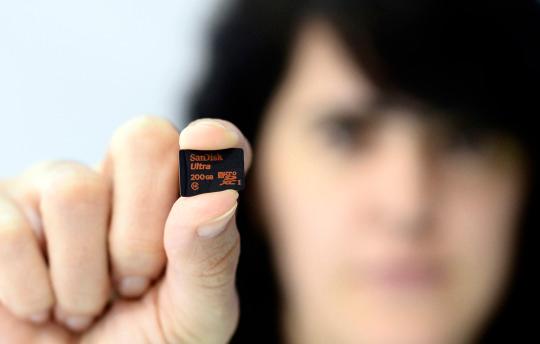
Remember
when we started carrying more data on our smartphones, and
manufacturers gave us the ability to supplement the internal storage by
popping in a cheap micro SD card? However, those days are coming to an
end as manufacturers decided to put profits ahead of end user
convenience.
Must See Gallery: 7 personal assistant robots coming home soon
There’s a piece over on tech news site Engadget
on the Chinese smartphone maker Xiaomi and how it was decided that the
flagship handsets shouldn’t make use of micro SD cards. It’s clear from
the piece that Xiaomi’s VP Hugo Barra thinks that having micro SD cards
slots in smartphones is a bad idea.
Barra: “For high performance devices, we are fundamentally against an SD card slot.”
Barra:
“You think you’re buying like a Kingston or a SanDisk but you’re
actually not, and they’re extremely poor quality, they’re slow, they
sometimes just stop working, and it gives people huge number of issues,
apps crashing all the time, users losing data, a lot of basically
complaints and customer frustration.”
Matías Duarte, Google’s VP of design, is also quoted as saying that “in reality it’s just confusing for users.”
Now,
as someone who’s used micro SD cards in a variety of devices, I’ve not
seen them cause crashing and instabilities, and having used them in a
variety of applications, I would dispute the claim that SD cards from
Kingston or SanDisk are “extremely poor quality.” I can also honestly
say that I’ve never found micro SD cards confusing.
The
reason that smartphone manufacturers are ditching micro SD card slots
in their devices, especially at the high end, is money. Manufacturers
can’t charge a premium for an SD card slot, but they can charge a $100
for a few extra gigabytes of flash storage.
What
Apple began with the iPhone, other manufacturers are now doing with
their smartphones. And from a making money point of view, it makes good
sense. A 128GB iPhone 6 costs the consumer $200 more than the 16GB
version, but adding that extra storage costs Apple less than $50.
What’s Hot on ZDNet
- Linksys brings fastest Wi-Fi router ever to market
- Windows 10: What you need to run it
- PC sales continue to take a beating
- Three questions to ask before buying a Surface 3
For
the consumer, this means having to decide up front how much storage
they plan to need over the lifespan of the device, and a lot of hassle
or even early obsolescence if space becomes an issue.
If
there’s an SD card slot on the device, then many users would buy the
lowest-cost (and lowest margin) device, and boost that with a cheap
micro SD card. I agree that it won’t be as fast as internal storage, but
for music, video, or apps that don’t demand a high level or
performance, it’s going to be more than adequate.
On
budget devices this is not so much the case, because the consumer base
won’t support paying a premium for a storage boost. This is why you
continue to find micro SD card slots on lower-cost smartphones.
If
you like removable batteries and micro SD card slots in your devices,
you’re going to find this need harder and harder to satisfy over the
coming years.
No comments:
Post a Comment